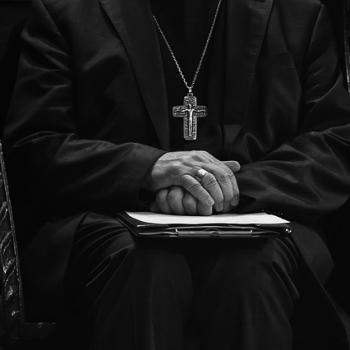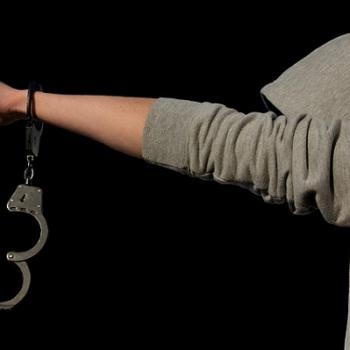 There’s a lot brewing in the American autism community this week, and while I’m mulling things over and how I feel about it (it’s coming in a later post, I promise), I thought I’d leave autism out of the picture today (gasp! Is that possible?) and share with you some interesting hijab-related articles that have come my way from some our wonderful Patheos bloggers.
There’s a lot brewing in the American autism community this week, and while I’m mulling things over and how I feel about it (it’s coming in a later post, I promise), I thought I’d leave autism out of the picture today (gasp! Is that possible?) and share with you some interesting hijab-related articles that have come my way from some our wonderful Patheos bloggers.
I rarely write about the hijab (headscarf) on my blog, because there are much better writers covering all angles of this never-ending story/debate/whathaveyou. And here’s what some of them had to say recently:
Over on Muslimah Media Watch, two posts caught my attention. One explores the life story of the writer’s aunt, a doctor who wears the headscarf. The musing is sparked by the recent spate of campaigns in Quebec and in the Singapore by people fighting for the right to wear the hijab (and other religious apparel) in the public sector. She writes about her aunt’s dedication to her profession and how if her hijab had been banned then so many lives would have been affected:
I can’t help thinking of the many lives that she has touched and that have benefited from her expertise, and how much the world would miss out on the valuable services of many doctors, nurses, teachers as well as other professionals if a policy like the Quebec’s Charter of Values is in place. As such, this policy is not only discriminatory to the subjects who are on the receiving end of the ban but also to public service as a whole.
The film does not go into the concept of wearing hijab as a way of hiding beauty; it presents it as part of the beauty these women have. For example, the first lady admits to trying the hijab on before putting it on. She took time picking colors and designs that match her style, which, in return, adds up to her natural beauty. She even mentioned the idea that in France black hijab is always associated with fundamentalists; this is why she refrains from wearing headscarves with dark colors. In her case, the color and style of her hijab is not just for beauty purposes, but it is also meant to defeat any preconceived ideas of fundamentalism and extremism.
The three women concur that people should not be judging them on their looks; instead, people should get to know them better, because hijab is part of the identity they hold, and part of the choice they made.
I find it interesting, in the latter post, the documentary touches up the idea of the hijab as part of a woman’s whole-person beauty rather than acting as a deterrent from physical beauty. Because in the next paragraph, the women go on to say that people should not judge them on their looks.
This hearkens back to an ongoing internal debate I have about how one dresses modestly and wears their hijab (for those who do). Are we to dress soberly and dowdy to not draw attention to looks? Can we dress modestly and nicely, such that we are pleased with our attire but are not seeking to gain attention for what we are wearing? Basically, how do we walk the line between modest dressing, hijab, fashion and self-confidence? These are internal debates I have every time I enter my closet to dress for the day (when I’m heading out).
Another article I read this week that made the rounds on social media (though it is from 2011) is from German Islam scholar Layma Kaddor, who lays out her case for why she things the hijab is now unnecessary:
If I as a Muslim woman living in Germany ask myself whether I should wear a headscarf or not, that gives rise to the question of whether the additional head-covering called for in the Koran (33:59) still fulfils its original purpose of protecting women from male desire. My answer is: no. In contemporary Germany such covering-up no longer serves that purpose. It is even more likely to bring about the opposite of what God intended by exposing wearers of headscarves to discrimination.
Today the intended protection against ‘annoyances’ is provided by a well-functioning legal system rather than by adherence to social rules from the past. A free state based on the rule of law protects a woman, for example by punishing attacks on her person. This protection may be primarily concerned with bodily integrity, but people in a modern state are more than ever responsible for themselves with regard to the freedoms accorded – including in the realm of moral integrity. Covering my head cannot relieve me of that responsibility. I cannot hide myself behind a little piece of cloth. A free and democratic state grants rights and also imposes responsibilities. In such circumstances I can behave honourably with and without a veil or head-scarf – or not, as the case may be.
Well, you can discuss her theory amongst yourselves. But I still believe the headscarf and the modest dressing that goes along with it is mandated by Islam. What we choose to do and our reasons for it is between us and God.
For your amusement, I’ll leave you with a video that had me laughing (and serves as a good commentary on this question on how fashionable is too fashionable when it comes to the hijab):












